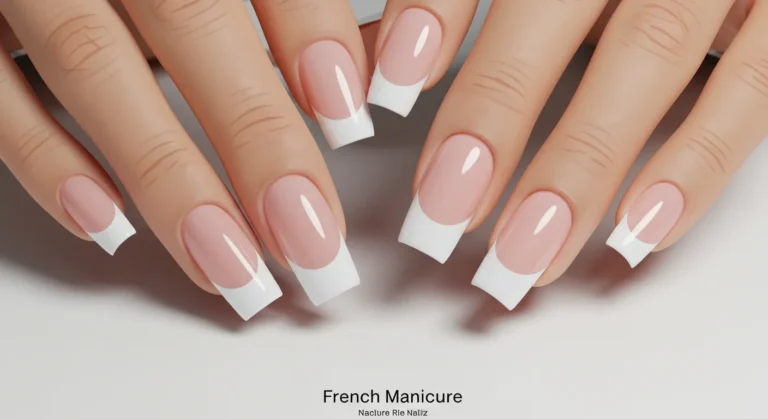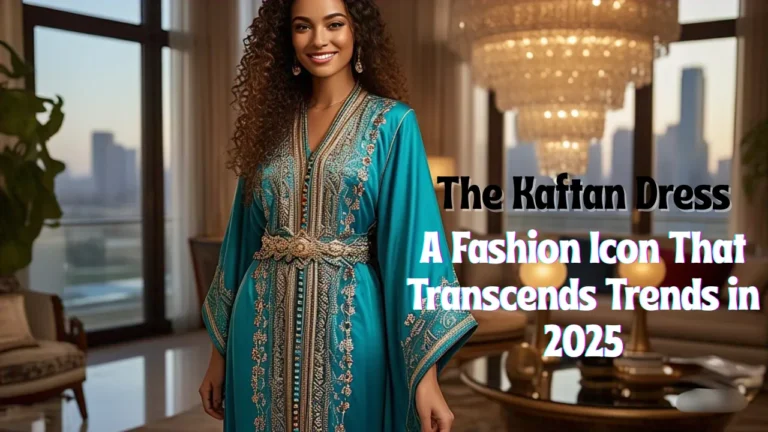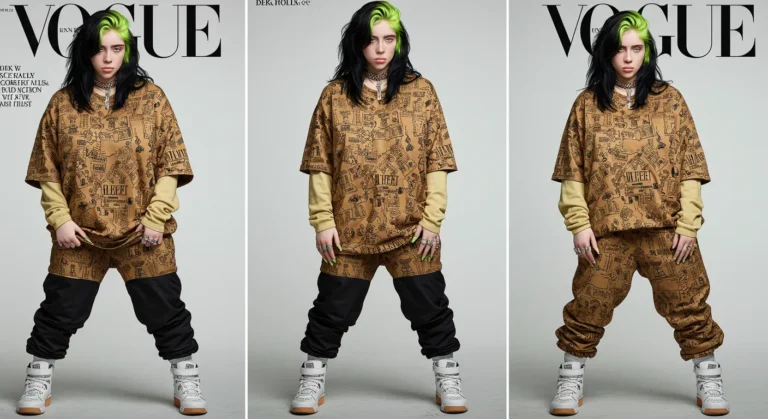best Herchcovitch Designs The guide of Brazilian fashion in 2025
Introduction
In today’s hyper-connected, ever-evolving fashion industry, where aesthetics shift with every scroll and consumers demand both sustainability and self-expression, one name continues to hold cultural weight beyond mere trends: designs. Originating in Brazil but echoing worldwide, these designs reflect not just fabric and form, but a statement of identity, ideology, and innovation. From runway domination in São Paulo to being referenced by new-wave designers across global fashion capitals, the legacy of Alexandre Herchcovitch and his namesake creations represents a timeless dialogue between art, activism, and avant-garde style.
As fashion grapples with its role in a world of climate urgency, gender politics, and tech-fueled reinvention, Herchcovitch’s influence is not just relevant — it’s essential. This is a designer who was talking about nonbinary fashion long before it became a marketing buzzword, who injected queer culture and political dissent into luxury silhouettes, and who dared to make the dark, punk, and intellectual beautiful in a world obsessed with perfection.
This introduction isn’t just about praising past glories. It’s about recognizing how Herchcovitch designs have forecasted many of today’s most talked-about fashion values: from radical inclusivity and sustainable production to culturally rooted storytelling and digital-age adaptability. In other words, Herchcovitch wasn’t following the fashion system. He was rewriting it — and that makes this article not just a tribute, but a crucial exploration of a living legacy.
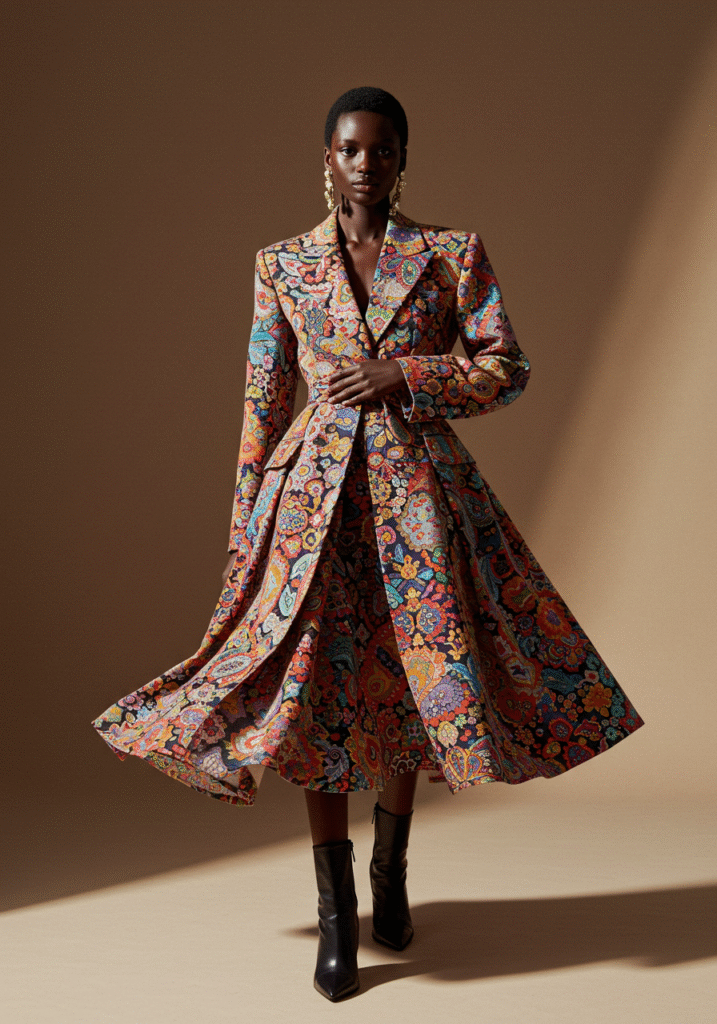
The Origins
Born in São Paulo in 1971, Alexandre Herchcovitch’s journey into fashion began at an intersection few others had tread: that of Orthodox Jewish tradition, queer identity, and underground Brazilian culture. He started sewing at a young age under the guidance of his mother Regina, whose boutique was a workshop of experimentation. By the late ’80s and early ’90s, when the Brazilian fashion scene was still largely conservative and global fashion was Eurocentric, Herchcovitch had already begun crafting a new language — one that spoke in symbols of rebellion, sharp tailoring, and coded references to sexuality, religion, and resistance.
His early collections featuring the now-iconic skull motif instantly became cult favorites, not just because they looked edgy, but because they meant something. That’s the Herchcovitch signature: garments that act as cultural signifiers. At a time when much of fashion was driven by superficiality, Herchcovitch leaned into narrative, intellect, and contradiction. His designs made statements — not just about fashion, but about being Brazilian, queer, and radical.
This background shaped what would become a career not only in clothing, but in disrupting fashion’s hierarchy.
Why Herchcovitch Designs Still Matter Today
Fast forward to 2025, and the fashion industry has transformed in nearly every way. Social media drives trend cycles in weeks, consumers demand transparency and ethics, and traditional gender lines have been rewritten. Yet as designers scramble to adjust, Herchcovitch already laid the foundation. His genderless collections from the late ’90s, his use of recycled fabrics before “green fashion” was popular, and his unapologetic celebration of queer and non-white identities positioned him miles ahead of the curve.
In today’s world of influencer aesthetics, microtrends, and mass-produced fashion, Herchcovitch designs offer something rarer: depth. His silhouettes — often deconstructed, asymmetrical, and theatrically conceptual — are not just garments. They are philosophies you wear. His ability to merge high fashion with emotional vulnerability makes his archive a goldmine for both researchers and resellers alike. That’s why you’ll still see his pieces worn by fashion icons, preserved in museums, and cited in academic fashion journals.
More importantly, Gen Z and Alpha consumers, who care deeply about authenticity, purpose, and storytelling, are now rediscovering Herchcovitch’s work as an alternative to fast fashion. On platforms like TikTok and Instagram, vintage Herchcovitch pieces are being styled with Y2K nostalgia, grunge revival, and sustainable fashion narratives — placing his creations directly in today’s trending conversations.
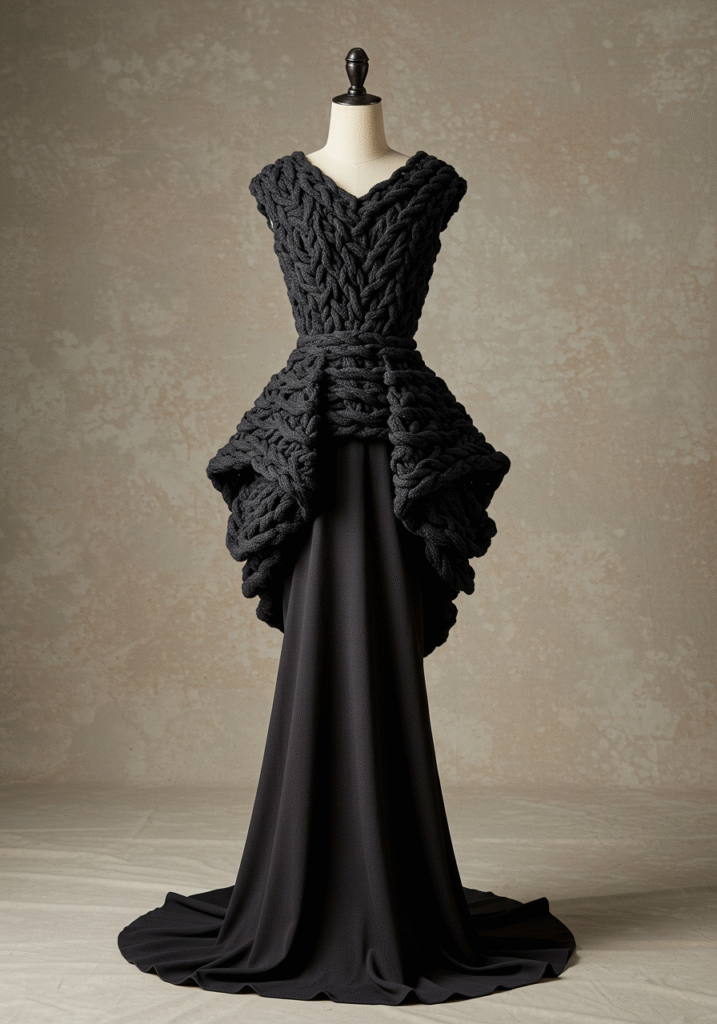
Designing a New Definition of Beauty
One of the most powerful aspects of Herchcovitch designs is how they challenge beauty norms without dismissing elegance. His work flirts with darkness — whether it’s Victorian funeral wear, gothic inspirations, or punk rebellion — but always maintains an air of couture polish. It’s this duality that makes his designs endlessly fascinating.
He proves that fashion can be intellectual without being inaccessible, political without being preachy, and experimental while still wearable. In fact, many of his most avant-garde collections featured wearable essentials — tailored jackets, reimagined denim, romantic dresses — but all with signature Herchcovitch twists: bold patterns, strange pleats, or androgynous cuts.
That’s what modern consumers crave today: clothes that don’t just follow trends, but tell their own stories. Herchcovitch designs aren’t made to blend in. They’re made to start conversations — about gender, identity, the past, the future, and everything in between.
Herchcovitch Designs
In the context of today’s fashion-tech evolution — where AR fashion, digital wardrobes, AI-designed collections, and virtual runways are becoming the norm — Herchcovitch’s visionary creativity is ripe for revival. His theatrical, thought-driven fashion sensibility aligns beautifully with the visual-first language of social media and digital avatars.
There’s even a case to be made for digitally archiving Herchcovitch designs as NFTs or metaverse wearables — giving his legacy a new, forward-thinking platform. Already, we’re seeing fashion houses digitize their archives, and designers like Herchcovitch (whose work relies so heavily on visual symbolism and storytelling) are perfectly positioned for that leap.
The Signature Aesthetic
Alexandre Herchcovitch is not one to follow rules — he rewrites them. His designs are best described as a collision of contrasts: masculine and feminine, urban and poetic, structured and fluid. But what really makes a Herchcovitch piece recognizable is its layered storytelling. Each garment often feels like a manifesto stitched into fabric — part wearable rebellion, part cultural archive.
Key Style Codes of Herchcovitch Designs:
- Androgyny: Long before gender-fluid fashion hit the mainstream, Herchcovitch was designing skirts for men and structured jackets for women that blurred lines beautifully.
- Symbolism: His collections frequently pull from religious iconography, anatomy, warfare, and Brazilian folklore — not in literal reproduction, but in abstract expression.
- Unusual Pairings: Expect velvet paired with vinyl, lace with latex, and punk tartan colliding with baroque prints. He has always used fashion as a canvas to disrupt expectations.
- Structural Mastery: Beneath all the experimentation is a foundation of technical skill. Tailoring is precise, often architectural, with clever pleating, layering, and asymmetry.
- Punk Spirit: While some designers create beauty, Herchcovitch creates questions. His garments often scream rebellion — like the infamous skull-printed pieces that helped launch his international fame.
What’s brilliant about Herchcovitch’s work is how it doesn’t chase perfection. Instead, it highlights contradiction, discomfort, and complexity — a mirror to the human experience. And that very honesty is what resonates so deeply in a fashion world increasingly criticized for its detachment.
Today, as designers lean more into inclusivity and nonconformity, many of Herchcovitch’s old runways now feel prophetic. He didn’t just set trends — he envisioned the future, often before the industry was ready for it.
Cultural Roots and Global Impact
While many global designers are groomed in European ateliers, Herchcovitch’s roots are proudly Brazilian — and that’s what makes his influence unique. Brazil, with its diverse population, vibrant subcultures, and political unrest, shaped not only Herchcovitch’s aesthetic but also his philosophy. Growing up gay in São Paulo during a conservative period, fashion became his weapon of expression, protest, and identity.
This is reflected in how he:
- Elevated Brazilian Fashion: Herchcovitch put São Paulo Fashion Week on the global radar, becoming one of the first Brazilian designers to show in Paris and New York.
- Bridged Underground and Couture: He made it fashionable to fuse drag, punk, favelas, and goth subcultures with luxury tailoring.
- Supported Local Industry: Even during his commercial collaborations, he pushed for Brazilian fabrics, artisans, and factories to gain international exposure.
- Inspired a New Generation: Many emerging Brazilian designers today — from João Pimenta to Fernanda Yamamoto — cite Herchcovitch as a direct influence.
More than just fashion, his designs encapsulate a movement: one that rejects colonial beauty standards, embraces diversity, and reclaims Latin American identity in high fashion.
Today, while he’s no longer helming his namesake label, his imprint is everywhere — from LGBTQ+ runway themes in Paris to the rise of decentralized fashion hubs beyond New York and Milan. Herchcovitch showed the world that brilliance doesn’t need a Western passport. It only needs a powerful point of view.
Herchcovitch in the Era of Sustainability
One of the most fascinating evolutions of Herchcovitch’s journey is how seamlessly his ethos aligns with modern sustainability and ethical fashion — even before these became mainstream priorities. While many luxury houses scramble to go green, Herchcovitch has long embraced:
- Slow Fashion: Unlike the fast-fashion cycle, his pieces were never trend-chasers. They were built to last, made with intent, and often revisited through reinterpretations across collections.
- Upcycling and Collaboration: His work with Melissa (the plastic shoe brand) brought bold, eco-conscious footwear into stylish limelight, using recyclable materials with high fashion appeal.
- Reclaiming Value in Local Production: Herchcovitch championed Brazilian artisans and textile workers, helping strengthen ethical production within the local industry.
But what’s more intriguing is how his brand is adapting to the digital shift in fashion — including virtual fashion, AI-generated concepts, and NFT garments. Although less public-facing in recent years, Herchcovitch’s sensibilities feel deeply in sync with this new frontier. Why? Because his designs have always defied physical norms — and digital fashion finally gives that imagination limitless space.
As fashion enters the metaverse and sustainability becomes non-negotiable, Herchcovitch designs could experience a renaissance — not as relics of the past, but as blueprints for the future. The industry is catching up to where he’s been all along.
The Lasting Legacy
Herchcovitch is more than a designer — he’s a cultural force, a disruptor, and an artist whose work carved space for nonconformity, Brazilian representation, and emotional depth in global fashion. His designs were never meant to simply impress — they were built to speak, to provoke, and to represent.
As trends evolve and fashion leans heavily into identity, tech, and ethics, Herchcovitch designs stand as a model of creative authenticity. Whether you’re a fashion student, a brand analyst, or a curious wearer of the avant-garde, understanding Herchcovitch is to understand where fashion has been — and where it still needs to go.
His garments are no longer just runway pieces — they’re archival collectibles, museum-worthy expressions, and inspirations for digital creators and futurists.
The question is no longer “Is Herchcovitch still relevant?”
The real question is — How long will it take the rest of the world to catch up?
FAQs
Who is Alexandre Herchcovitch and why are his designs significant in global fashion?
Alexandre Herchcovitch is a renowned Brazilian fashion designer celebrated for his avant-garde, conceptual, and boundary-pushing designs. His work is significant because he challenged traditional ideas of beauty, gender, and identity long before the mainstream fashion world embraced such themes. Known for his iconic skull motif, genderless silhouettes,
What defines the aesthetic of Herchcovitch designs?
Herchcovitch designs are defined by a unique blend of elegance and rebellion. His aesthetic merges high fashion with counterculture, using unexpected materials, asymmetrical tailoring, bold prints, and deconstructed silhouettes. Gothic, punk, Victorian, and streetwear influences often converge in his collections. Despite the edgy, sometimes theatrical styling, his clothing remains highly wearable, offering deep meaning beneath every stitch. From skulls and latex to lace and denim, his work challenges norms while celebrating individuality, making it ideal for those who view fashion as a form of personal and political expression.
Are Herchcovitch designs still relevant in 2025?
Absolutely. Herchcovitch’s designs are more relevant than ever in 2025, especially with the rise of slow fashion, vintage clothing markets, and the global push for sustainability and authenticity. His early focus on genderless fashion, recycled materials, and expressive design aligns perfectly with the values of Gen Z and modern fashion consumers.
Where can I buy Herchcovitch designs today?
Although Alexandre Herchcovitch sold the rights to his brand in 2016, his designs remain available through a variety of sources. You can find vintage Herchcovitch pieces on global platforms like Vestiaire Collective, The RealReal, Grailed, and Depop, or explore fashion museums and exhibitions for archival collections.
What made Herchcovitch’s skull motif so iconic?
The skull motif, introduced in the early 1990s, became Herchcovitch’s signature symbol — not for shock value, but as a complex representation of mortality, rebellion, and identity. In an era when logos were about luxury, Herchcovitch’s skulls represented anti-fashion sentiment, queer resistance, and subcultural pride.
Conclusion
In the ever-evolving world of fashion, where trends rise and fall with the seasons, only a few designers leave a lasting imprint that transcends clothing and enters the realm of culture, identity, and ideology. Alexandre Herchcovitch is undoubtedly one of those rare figures. His designs are not just garments — they are provocations, expressions, and cultural artifacts. As we reflect on the body of work that spans decades, continents, and movements, the conclusion is clear: Herchcovitch designs continue to shape fashion’s past, present, and future in ways both visible and deeply structural.
To truly understand the legacy of Herchcovitch, we must look beyond runway aesthetics and celebrity endorsements. His influence is best measured not by mass-market trends, but by the cultural shifts he predicted, inspired, and embodied. Long before conversations around gender neutrality, sustainable fashion, and identity politics became central to global fashion discourse, Herchcovitch was already leading the way — using his collections as tools for storytelling and social commentary. He introduced the fashion world to Brazilian counterculture, to Gothic romanticism laced with punk defiance, and to a vision of beauty that included queerness, rebellion, and originality.
Herchcovitch’s skull motif alone became more than a logo — it was a symbol of youthful resistance, cultural critique, and intellectual style. Today, that symbol resurfaces not just in vintage markets but on the streets, in archives, and across social platforms that celebrate 90s and 2000s fashion with a new lens. His early collections — often misunderstood at the time — are now revisited as visionary blueprints for the kind of inclusive, expressive fashion we praise today. In that sense, Herchcovitch wasn’t ahead of the trend — he created the trend, and the world is still catching up.
One of the most remarkable aspects of his work is how it maintains emotional durability. Whether through tailored jackets with a punk edge, lace dresses that blur gender lines, or runway presentations that felt more like theater than fashion shows, Herchcovitch offered pieces that were not disposable, but designed to endure — in memory, meaning, and wearability. This aligns perfectly with today’s rising interest in slow fashion, conscious consumption, and archival collecting, where quality and narrative hold more value than logos or hype.
Even after selling the rights to his brand in 2016, Herchcovitch’s DNA remains intact in countless ways. His design philosophy has filtered into the broader fashion ecosystem, influencing both independent designers and global fashion houses. The return of maximalist expression, gothic revival, and androgynous silhouettes in contemporary collections bears traces of Herchcovitch’s early aesthetic. And as consumers demand more from the brands they support — in terms of values, diversity, and storytelling — the blueprint left by Herchcovitch feels more relevant than ever.
Furthermore, Herchcovitch’s legacy is not confined to runways or editorials; it has carved a niche in the hearts of creatives, stylists, fashion theorists, and collectors. In a time where digital fashion archives are booming and secondhand luxury markets are thriving, his pieces are considered cultural gold, both for their artistry and their role in shaping alternative fashion histories. From New York to Tokyo to São Paulo, Herchcovitch is still discussed in design schools, fashion documentaries, and retrospectives, where his work is studied as a masterclass in radical elegance and cultural authenticity.
What also sets Herchcovitch apart is his commitment to Brazilian identity. He didn’t abandon his roots for international acclaim — instead, he carried Brazil with him, weaving its complexities, contradictions, and beauty into every garment. Through him, the global fashion world saw a different face of Brazil: bold, rebellious, queer, artistic, and unapologetically original. This was not the sanitized or tropicalized version often seen on tourist brochures, but a raw and authentic vision of Brazilian youth, street culture, and artistic innovation.
In today’s hyper-competitive and commercialized fashion world, where algorithm-driven designs and microtrends dominate, Herchcovitch reminds us that fashion can still be an act of courage. It can be intellectual without being inaccessible. It can be avant-garde without losing touch with the people it serves. And above all, it can be used as a voice — a medium through which the invisible becomes visible.
So, what can modern designers, brands, and fashion lovers learn from Herchcovitch? The lesson is clear: Stay authentic. Embrace complexity. Speak truth through design. Push boundaries not for attention, but for evolution. Whether you’re a young fashion student, a vintage collector, a cultural curator, or simply someone seeking style that means something, Herchcovitch designs offer more than just clothing — they offer a philosophy, a challenge, and an invitation to dress with purpose.
In conclusion, Herchcovitch designs represent one of the most important contributions to modern fashion history — not because of fleeting fame, but because of their lasting cultural value, deep emotional intelligence, and fearless innovation. As we look forward to what fashion will become in the next decade, we would do well to revisit and respect the legacy of a designer who was never content to follow the rules — and who showed the world how to break them beautifully.



